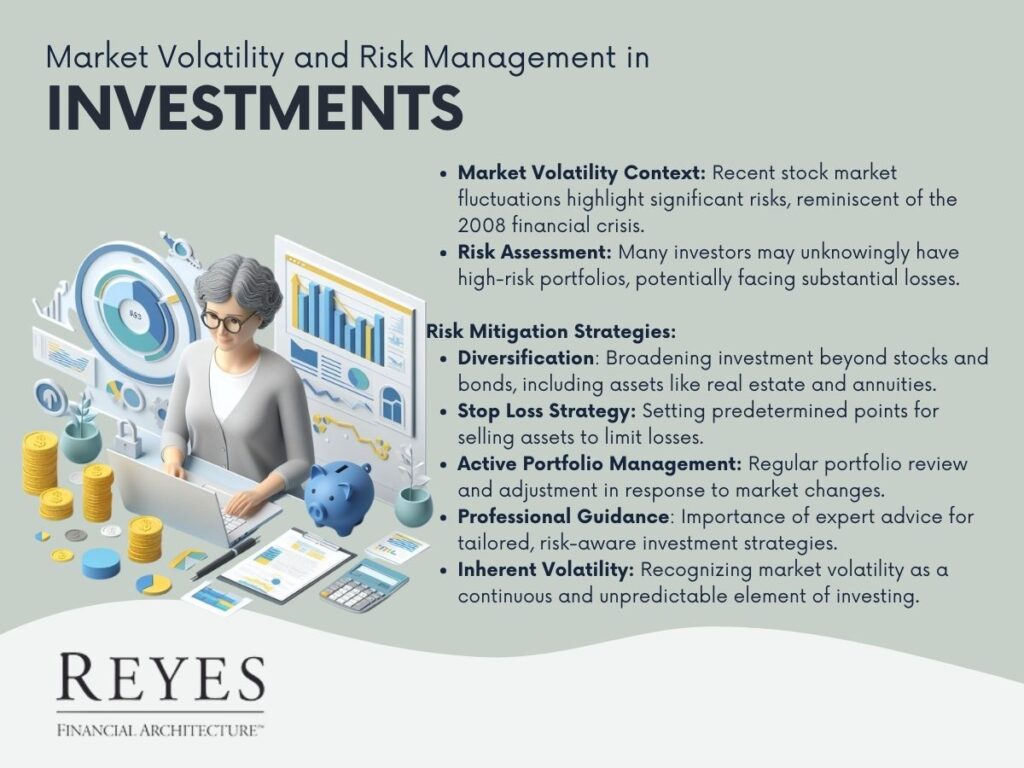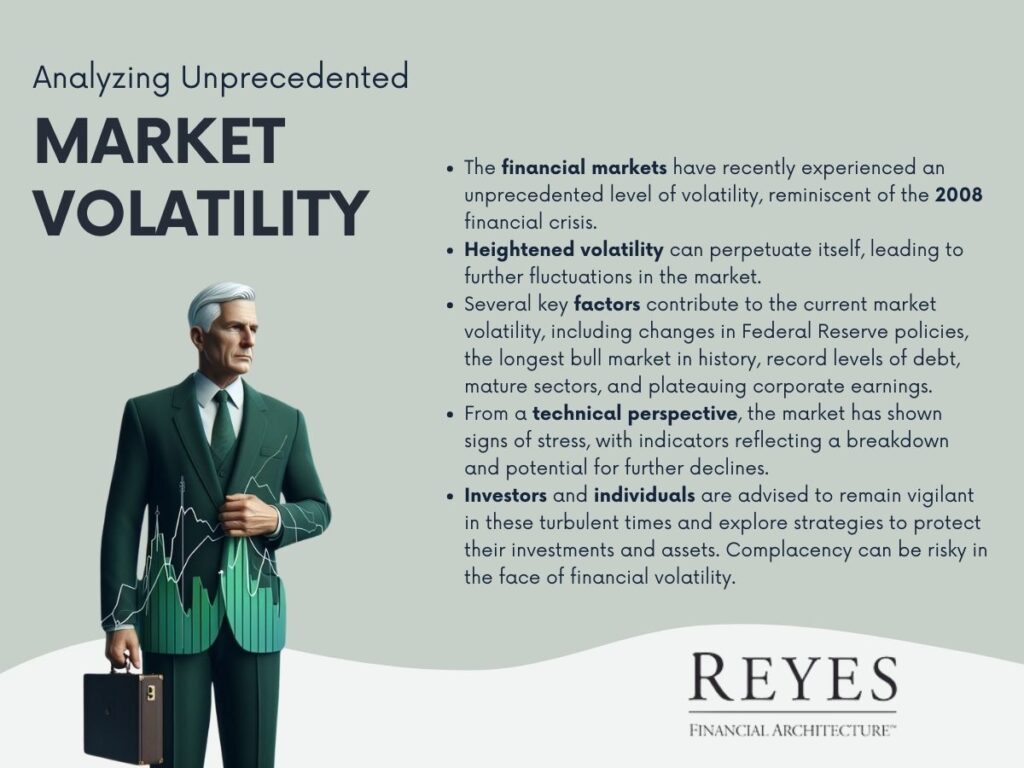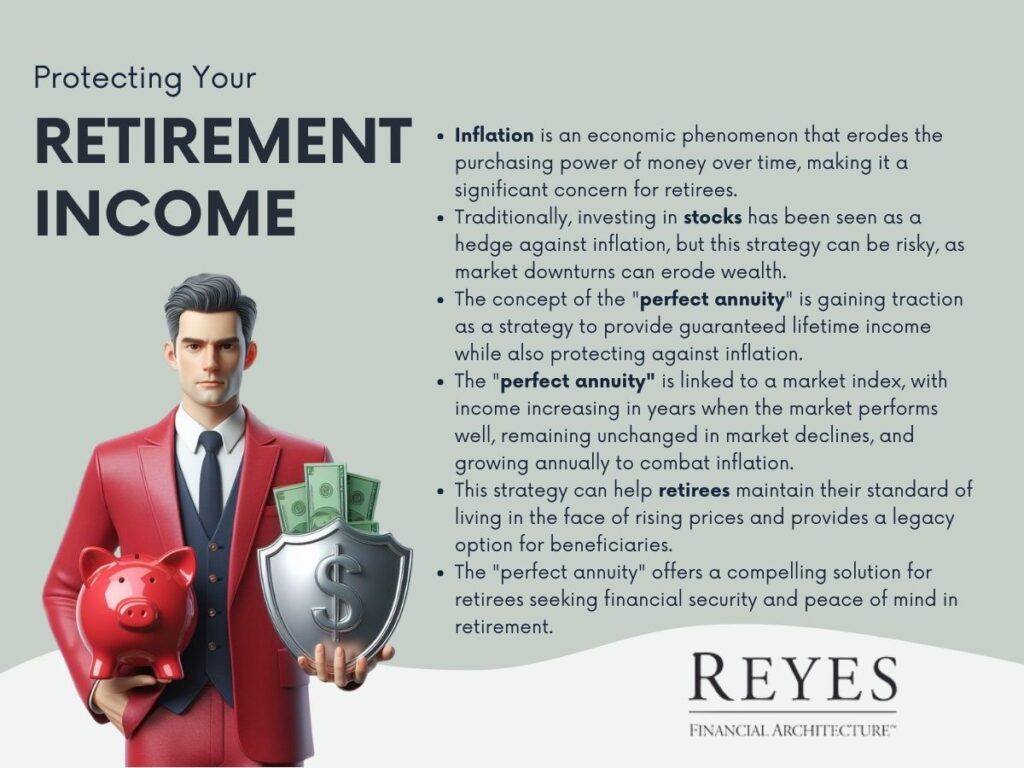Click the video to watch David Reyes, The Retirement Architect share the latest in the market and how the year is ending for 2018!
In the ever-fluctuating world of finance, understanding market dynamics is crucial for investors and financial enthusiasts alike. Recently, the stock market experienced a significant downturn, drawing comparisons to historical financial crises. This post delves into the key factors contributing to this decline and offers a perspective on managing investments during such turbulent times.
December witnessed a sharp decline in stock market values, marking it as one of the worst Decembers since 1932, during the Great Depression. This drop is notable in its severity, considering the historical resilience of markets during this month traditionally. The decline wasn't isolated to the United States; it was a global phenomenon, with significant downturns in major economies.
A critical factor in this downturn was the actions and policies of the Federal Reserve. The Federal Open Market Committee (FOMC) meeting held in the same month played a significant role:
Historically, there's a correlation between rising interest rates and declining stock markets. Higher interest rates generally lead to increased borrowing costs for individuals and businesses, which can dampen economic activity and reduce corporate profits. Additionally, higher rates make bonds and other fixed-income investments more attractive compared to stocks, potentially leading to a shift in investment allocations.
Despite the turmoil, there are strategies for managing investments effectively during such periods. Investors who have diversified portfolios and a long-term investment strategy often fare better in weathering market volatility. It’s crucial to understand that market fluctuations are a normal part of the investment cycle and that overreacting to short-term movements can be detrimental to long-term investment goals.
In challenging market conditions, the role of financial advisors becomes even more critical. They offer guidance and expertise in reallocating and adjusting investment portfolios to align with changing market conditions and individual investment goals. Advisors also play a key role in providing emotional reassurance, helping clients stay focused on their long-term objectives and avoid making decisions driven by fear or market panic.
While predicting the future of the stock market with certainty is impossible, analyzing current trends and economic indicators can provide some insight.
Investors and analysts will be closely monitoring the actions of the Federal Reserve, geopolitical developments, and economic data in the coming months to gauge the market's direction.
The recent downturn in the stock market serves as a reminder of the inherent uncertainties and risks in investing. However, by understanding the factors that influence market movements, adopting a diversified and long-term investment strategy, and seeking professional guidance, investors can navigate these challenging times more effectively.
As history has shown, markets have a tendency to recover over the long term, and maintaining a balanced and informed approach is key to successful investing.
In an era marked by significant market fluctuations, understanding and managing investment risks is essential. This article explores effective strategies to navigate the current volatile financial landscape, emphasizing the importance of diversified portfolios and proactive risk management for investors and advisors alike. It serves as a guide to facing market challenges with informed and strategic financial planning.

The recent fluctuations in the stock market have been a cause for concern for many investors. This was highlighted in a recent interaction where a client experienced a significant loss during the process of transferring funds from a major brokerage firm.
Such instances underscore the unpredictability and volatility that currently characterizes the financial markets. For instance, there were days when the Dow Jones Industrial Average (Dow) experienced a drop of about 700 points, translating to a 6-7% move within just two days. This level of volatility is reminiscent of the financial crisis of 2008, where the market plummeted by 55%.
A key aspect of investment strategy is understanding and managing risk. Many investors might not be fully aware of the level of risk present in their portfolios. For example, a review of one investor's portfolio showed a staggering 96% investment in stocks, with a potential downside of 55%.
On average, it's estimated that many could face a 30% loss in their portfolios if a financial crisis similar to 2008 were to occur again. This raises important questions about how individuals and their advisors manage investment portfolios.
For those managing their own investments, these market conditions can be particularly challenging. The lack of professional guidance may lead to decisions that inadvertently increase risk. Similarly, working with an advisor who adopts a passive approach to portfolio management can be equally risky. Investors are encouraged to seek professional advice tailored to their specific financial situations and goals.
It's crucial to recognize that market volatility is an inherent aspect of investing. Volatility tends to breed more volatility, making it unpredictable and continuous. Therefore, understanding and preparing for these fluctuations is key to successful long-term investment.
Investors concerned about their portfolio's exposure to market volatility should consider reaching out for professional financial advice. The aim should be to develop a strategy that aligns with their risk tolerance, investment goals, and the current economic landscape.
By adopting a proactive and informed approach to investment, individuals can better navigate the complexities of the financial markets, ensuring their portfolios are resilient against the unpredictable nature of market volatility.
In today's rapidly evolving financial landscape, it's crucial to stay informed and vigilant about the state of the markets. Recently, an expert provided valuable insights on the current state of the market, emphasizing the unprecedented volatility that has gripped the financial world. In this article, we will delve into the reasons behind this cautionary stance and explore the factors contributing to the current market turmoil.

As noted, the financial markets have experienced an unusually high level of volatility in recent times, reminiscent of the tumultuous days of the 2008 financial crisis. This heightened level of market turbulence has not been witnessed since October 2008 and even 2010 came close to matching the current instability.
The adage that "volatility begets volatility" holds true in the financial world. When the market experiences significant fluctuations, it tends to perpetuate this trend. Over the last decade, investors grew accustomed to relative stability, which may have bred complacency. However, the current situation signals a shift in the market dynamics.
Several factors contribute to the heightened volatility observed in today's market:
From a technical perspective, the market has shown signs of stress not seen since 2008 and 2011, with indicators reflecting a breakdown. The S&P 500 is currently hovering around the 2600 level, reflecting a 10% drop from its peak. If the market breaks through this level, it could potentially decline to around 2,300, marking a 20% decline.
In conclusion, the recent market turbulence serves as a stark reminder that complacency in the face of financial volatility can be perilous. The combination of factors such as shifting Federal Reserve policies, an extended bull market, mounting debt levels, and plateauing corporate earnings has created a climate of uncertainty in the financial markets.
Investors and individuals alike would be wise to remain vigilant in these turbulent times. As market experts aptly put it, it's not the time to be complacent. Exploring strategies to protect investments and assets during these uncertain times may prove to be a prudent course of action.
In 1980, Ronald Reagan famously compared inflation to a violent mugger, a frightening armed robber, and a deadly hitman. During the tumultuous 1970s and early 1980s, inflation rates soared, averaging around 13.5%. This period of rampant inflation had a profound impact on the cost of goods, effectively doubling them within a decade.
While we might have experienced a reprieve from high inflation in recent years, it's crucial to recognize that it can rear its head once more. This article delves into the critical relationship between inflation and investing, highlighting the often-overlooked concept of the "perfect annuity" as a tool to combat the eroding effects of inflation in retirement.

Inflation is an ever-present economic phenomenon that erodes the purchasing power of money over time. When you invest, especially in long-term assets like stocks, the goal is to outpace inflation and preserve the value of your wealth.
Traditionally, many have seen investing in stocks as a hedge against inflation, with the assumption that equities can generate returns that outpace the rising cost of living. However, this assumption doesn't always hold true, as evidenced by events like the 2008 financial crisis, which wiped out substantial portions of many portfolios.
Investors often face the challenge of ensuring that their income and wealth can withstand the corrosive effects of inflation, especially in retirement. While the concept of the "perfect annuity" may sound like an ideal solution, it remains a relatively obscure strategy. In this article, we aim to shed light on this innovative approach to safeguarding retirement income while simultaneously battling inflation.
The "perfect annuity" is a financial strategy designed to provide guaranteed lifetime income while also offering protection against inflation. This concept is gaining traction among financial advisors and retirees for its potential to address two significant retirement concerns: longevity risk and inflation risk.
Consider a scenario where an individual has a retirement portfolio of approximately $1 million. By strategically allocating a portion of this portfolio to a perfect annuity, they can secure an annual income for life. Over a 20-year period, assuming a conservative annual growth rate, their income will almost double, providing a reliable hedge against inflation.
One of the significant advantages of the perfect annuity is its resemblance to a pension. In most cases, when you choose a joint life expectancy option, both spouses can enjoy the same income benefits. Moreover, if there's a remaining balance upon the passing of the annuitant and their spouse, it can be passed on to beneficiaries, such as children, providing a legacy that many traditional annuities do not offer.
Inflation is an ever-present financial adversary, and safeguarding your retirement income against its erosive effects is paramount. The "perfect annuity" represents a powerful and relatively undiscovered tool in this battle.
By combining guaranteed lifetime income with the potential for income growth that keeps pace with inflation, this strategy offers a compelling solution for retirees seeking financial security and peace of mind.
It's a strategy worth considering as you plan for your retirement years and aim to ensure that your income not only lasts a lifetime but also remains resilient in the face of inflation's challenges.
Picture a scenario where you have a reliable pension plan that ensures a steady stream of income for both you and your spouse throughout your lifetimes. While this may seem like an enticing prospect, traditional pension plans often come up short in delivering such comprehensive financial benefits.
In this article, we will explore the concept of the perfect annuity, a financial instrument that combines the reliability of a pension with safeguards against inflation, offering a practical solution for those aiming for a secure retirement.

Conventional pension plans, although valuable, do not always guarantee equal income protection for both spouses in the unfortunate event of one's passing. Typically, the surviving spouse receives reduced or no pension income when one partner passes away.
Given that, statistically, husbands tend to predecease their wives, this discrepancy leaves the surviving spouse financially vulnerable. It underscores the need for an alternative financial solution that ensures guaranteed income for both individuals throughout their lifetimes.
The perfect annuity concept, which we will explore further, combines the strengths of a traditional pension with provisions for inflation-adjusted income. While it's essential to acknowledge that no financial product is entirely devoid of risks, we will provide a hypothetical example to illustrate the potential advantages of this concept.
Before delving into the hypothetical scenario, it's vital to understand the broad categories of income annuities:
Now, let's consider a scenario where a client invests a substantial sum in an ideal annuity that offers increasing income options tied to a market index. The client decides to defer their annuity for a specific period, aiming to retire at a later date.
Upon reaching retirement age, the annuity has grown significantly in value. The client can then choose to withdraw a percentage of the annuity value, resulting in a substantial annual income. This income represents a significant percentage of the original investment, providing financial security throughout their lifetime. Furthermore, this income has the potential to increase over time, providing protection against the erosive effects of inflation.
While the perfect annuity concept discussed in this article serves as a hypothetical example, it illustrates the potential benefits of merging the dependability of a traditional pension with provisions for income growth to counteract inflation. Such financial tools can offer retirees peace of mind, knowing they will receive a consistent income stream throughout their retirement years, with the added benefit of potential income growth.
It's essential to consult with a financial advisor to explore annuity options and tailor them to individual circumstances and risk tolerance. While the ideal annuity may not be suitable for everyone, it remains an intriguing concept for those seeking to secure their financial future and enjoy a retirement free from financial worries.
Watch this informative and interactive video to learn more about our services!
In the complex world of finance, selecting a qualified financial advisor is crucial for ensuring effective management of your financial assets. Financial industries, recognizing the need for establishing benchmarks of excellence, have developed various accreditation programs.
These programs serve as a beacon, guiding individuals in choosing competent financial advisors equipped with the necessary skills and knowledge. Below is an overview of some prominent designations you should consider when selecting a financial advisor.

The Certified Financial Planner (CFP) is among the most sought-after designations in financial planning. To earn the CFP title, candidates must excel in four core areas: Education, Examination, Experience, and Ethics.
This comprehensive approach ensures that CFP professionals are well-equipped to offer sound financial planning advice. They undergo rigorous academic training, covering a wide range of topics including retirement planning, estate planning, risk management, and tax planning.
The examination phase is exhaustive, testing their practical application skills and theoretical knowledge. Furthermore, they must accumulate substantial real-world experience before they can be certified. Finally, adherence to high ethical standards is mandatory, ensuring that a CFP acts in the best interest of their clients.
The Chartered Financial Consultant (ChFC) designation is similar to the CFP in many respects, particularly in the depth and breadth of financial knowledge required. However, one key difference is the absence of a comprehensive board examination in the ChFC certification process.
ChFC professionals specialize in all aspects of financial planning, including insurance, income taxation, retirement planning, investments, and estate planning. This designation is often pursued by professionals who wish to deepen their understanding of financial planning without undergoing the CFP’s rigorous examination process.
The Chartered Life Underwriter (CLU) is the premier designation for professionals specializing in life insurance and estate planning. Regarded as the most respected insurance designation, the CLU equips professionals with in-depth knowledge of various life insurance products and a comprehensive understanding of the legal, financial, and tax aspects of estate planning.
This designation is particularly valuable for individuals seeking expert guidance in life insurance and estate management.
A Certified Public Accountant (CPA) is a professional who has excelled in the realm of accounting. To attain the CPA designation, one must complete the required college courses, earn a bachelor’s degree, and pass a rigorous 19-hour examination spread over two days. CPAs specialize in various aspects of financial management, including taxes, auditing, and bookkeeping. Their expertise is particularly vital in navigating complex tax laws and ensuring accurate financial reporting and auditing.
The Chartered Financial Analyst (CFA) designation is highly coveted in the field of investment management. To become a CFA, candidates must undergo a demanding course of study and pass a series of challenging exams.
The focus of the CFA program is investment analysis and portfolio management. CFAs are renowned for their expertise in financial analysis, valuation, asset management, and the application of ethical and professional standards in investment management.
The financial industry is constantly evolving, leading to the emergence of new designations. While these new credentials may offer specialized knowledge in certain areas, it's important to note that not all are as rigorously tested as the CFP and CPA designations.
As the financial landscape becomes increasingly complex, these designations play a pivotal role in defining the standards of professionalism and competence.
Choosing a financial advisor with the right designation is a crucial step in ensuring that your financial needs are adequately addressed. Each designation signifies a different area of expertise and a different approach to financial management.
It's essential to select a professional who not only holds a relevant designation but also understands your unique financial situation and goals. Look for advisors who are committed to aligning their expertise with your specific needs.
When selecting a financial advisor, the array of designations can be overwhelming. However, understanding these key designations – CFP, ChFC, CLU, CPA, and CFA – can significantly aid in making an informed choice. Remember, the right financial advisor is not just about credentials; it's also about finding someone who can tailor their expertise to your individual needs.
Always inquire about their experience, their approach to financial planning, and how they intend to meet your specific requirements. With the right advisor, you can navigate the complexities of financial planning with confidence and clarity
.
Click on the link to watch our interactive video to quickly and simply understand: How to Strategize for your Social Security Benefits.
Social Security serves as a foundational element in many retirement plans, and understanding how to strategize for maximum benefits is crucial. With increasing life expectancies, retirement can last between 20 to 30 years, making Social Security planning more critical than ever. This blog explores the strategies for optimizing Social Security benefits, helping ensure a financially secure retirement.

The Social Security system in the United States is designed to provide financial support to individuals in their retirement years. The amount of benefit one receives is based on their 35 highest-earning years of work. The full retirement age (FRA) – the age at which one is eligible for full benefits – varies from 66 to 67, depending on the birth year.
The age at which you start claiming Social Security benefits significantly impacts the amount received. Claiming benefits at the earliest age of 62 results in a reduction of at least 25% compared to waiting until the full retirement age. Conversely, delaying benefits past the FRA up to age 70 leads to an increase in benefits, with a maximum increase of 32% at age 70.
For example, if the retirement income at age 66 is $2,000 per month, retiring at this age versus waiting until age 70 can mean a difference of over $200,000 over a lifetime. This stark difference underscores the importance of timing in Social Security planning.
Couples have additional strategies available. Spouses can claim benefits based on their work record or receive up to 50% of their spouse’s benefit at full retirement age, whichever is higher. Coordinating the timing of benefit claims can maximize total household Social Security income. For example, the lower-earning spouse might start benefits earlier, while the higher-earning spouse delays benefits to increase the survivor benefit.
Working while receiving Social Security benefits before reaching the full retirement age can temporarily reduce your benefits. Understanding these rules is vital for those planning to work part-time in retirement. After reaching the full retirement age, however, earnings do not affect Social Security benefits.
Up to 85% of Social Security benefits can be taxable, depending on your total income. Planning for tax implications is essential. Strategies like Roth IRA conversions or timing the withdrawal of retirement accounts can impact the taxation of Social Security benefits and overall retirement income.
Repositioning assets to reduce taxable income can lead to more tax-efficient retirement income. This might involve shifting from taxable accounts to Roth IRAs or employing tax-loss harvesting strategies. This repositioning can influence the taxation of Social Security benefits, potentially leading to lower overall tax liabilities.
With over 500 possible combinations of factors affecting benefits, consulting a financial advisor who specializes in Social Security planning is highly recommended. An advisor can offer customized strategies based on individual circumstances and help navigate the complex rules of the Social Security system.
Social Security planning should be a personalized process, reflecting individual work histories, health status, family circumstances, and retirement goals. The decision on when to claim benefits is a pivotal one, with long-lasting financial implications.
Understanding the nuances of the Social Security system and employing strategic planning can make a significant difference in retirement income, ensuring a more secure and comfortable retirement phase.
As retirements grow longer, the importance of maximizing Social Security benefits cannot be overstated. It's not just about when to start claiming benefits but how to integrate them with other retirement income sources, tax planning, and spousal benefits. Informed decisions and strategic planning in this arena are invaluable for achieving a financially stable and fulfilling retirement.
Why? Because the "File and Suspend," Social Security claiming strategy, which allowed a retiree to take benefits off of a spouse’s record while deferring his or her own record, has been eliminated.
I believe this decision was based on one paragraph of the 2015 federal budget proposal. The graph said the budget proposed to eliminate “aggressive Social Security claiming strategies, which allow upper-income beneficiaries to manipulate the timing of collection of Social Security benefits in order to maximize delayed retirement.”
The veracity of this statement depends on what you mean by the words “upper income.” Means testing to obtain Social Security benefits could have the largest impact on the people who work hardest and provide the most jobs of any sector of the economy: small business owners. And though no one knows assuredly if means testing will become a reality, there’s enough discussion nationwide now that the subject needs to be explored.
In 1934, President Franklin D. Roosevelt addressed the Social Security founding committee and said that, “It takes so very much money to provide even a moderate pension for everybody, that when the funds are raised by taxation only, a ‘means test’ must necessarily be made a condition of the grant of pensions.”
In short, he said taxpayer-paid retirement benefits should go only to those who really need them.
Pundits are already exploring what means testing to obtain Social Security income might look like. Under one recent plan posed by David John of the conservative Heritage Foundation, for the AARP Public Policy Institute, high-income couples or individuals earning more than $55,000 in non-Social Security retirement income would see their monthly benefits reduced. For every $1,000 of income they have over $55,000, their Social Security benefits would be reduced by about 1.8 percent. So, if non-Social Security retirement income equaled $65,000, their benefits would be reduced by 18 percent.
In another means testing scenario posited by John, couples could see reduced benefits if they had non-Social Security income equaling $110,000. They would receive no Social Security benefits if income was over $165,000.
This plan reduces benefits for about 4.5 percent of retirees and eliminates benefits for another 4.5 percent, according to John. Keep in mind that the top 20 percent of wage earners who make more than $134,000 per year pay 84 percent of all U.S. taxes.
Business owners can implement strategies to implement to prevent this loss of future income they have paid for and planned for during their retirement lifetimes. The number-one strategy that needs to be implemented is a well-designed pension or Defined Benefit plan.
Unlike IRAs and 401(k)s, which allow business owners to invest up to $23,000 annually, these specialized Defined Benefit plans-- if properly structured-- can significantly increase contributions and reduce taxes 50 percent in some cases, a double benefit. Additionally, these unique, fully-insured plans can create guaranteed lifetime income streams of well over $100,000 per year.
In your 30s, contributions can equal over $125,000 per year; in your 40s, nearly $200,000; and in your 50s to 60s, well over $300,000 per year.
An additional benefit is that these plans are creditor-proof from legal liability and bankruptcy. WealthManagement.com has reported that O.J. Simpson, who has a $33 million civil judgment against him and is serving a prison term for armed robbery, still receives hundreds of thousands of dollars per year from his pension or Defined Benefit plan.
The bottom line is, we don’t know if and when means testing will occur. But this has been an option from the day the Social Security program was enacted.
Business owners should be prepared and proactive. The elimination of File and Suspend could be the beginning of means testing for Social Security for those of us younger than 66-- which includes the majority of people in the workforce today.
# # #
David Reyes is founder of Reyes Financial Architecture of La Jolla, a Registered Investment Advisory firm that acts as a fiduciary and specializes in portfolio risk management strategies, retirement income distribution and Social Security planning. He has been named the National Social Security Advisor of the Year, an annual award given to professional advisors who are knowledgeable and passionate advocates for Social Security education.